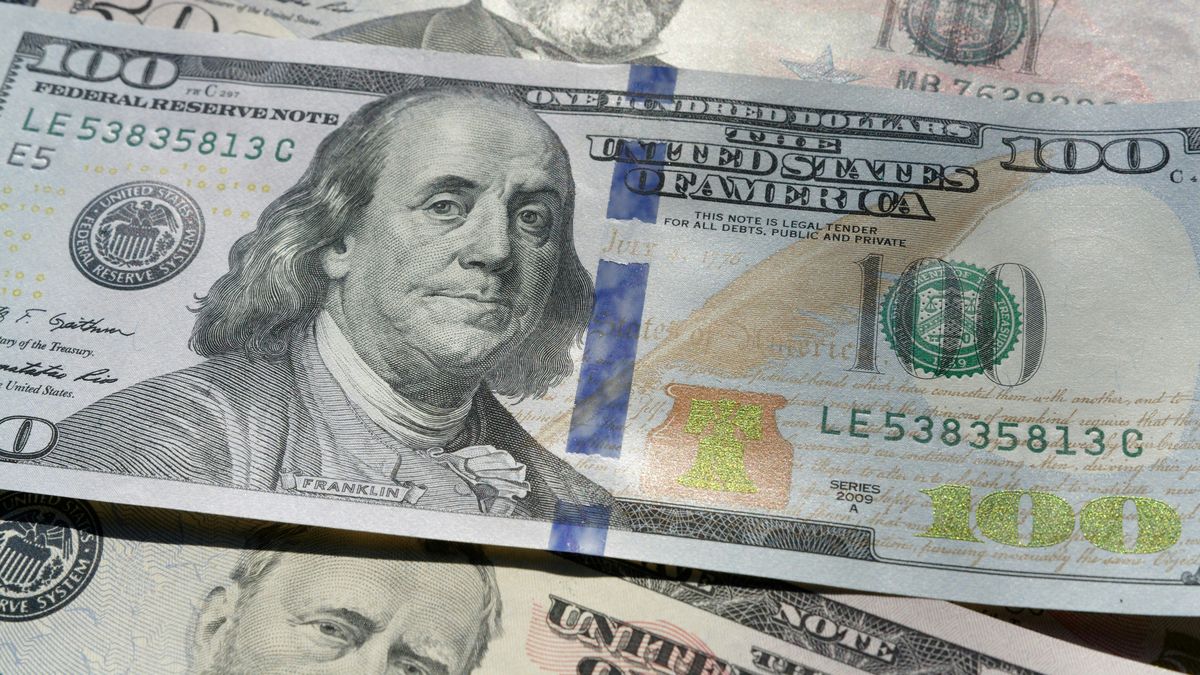He global dollar fell in the early hours of Tuesday due to the reassessment of investors regarding the international situation and their expectations regarding the future rate cuts on the part of the United States Federal Reserve (Fed)even when the conflict in the Middle East continues to support the currency’s appeal as safe haven.
He dollar index —which measures the performance of the greenback in relation to a basket of six other internationally relevant currencies— fell 0.1% to 102.38 units, and continues to decline from its seven-week high, driven mainly by the rise of the conflict in Middle East.
However, the change in behavior responds to investors’ expectations regarding upcoming rate cuts: traders have drastically changed their monetary easing expectations on the part of the Fed this year after a strong jobs report last week lent credence to comments by central bank chief Jerome Powell that it would maintain its usual rate reductions of a quarter of a percentage point after the sharp drop in September.
Along the same lines, the president of the Federal Reserve Bank of New York, John Williamsstanding vote of the Federal Reserve Rate-Setting Committee, echoed Powell’s comments and told the Financial Times in an interview that he does not see the September measure “as the rule for how we act in the future.”
“Much of the readjustment of the dollar is due to the idea that the Federal Reserve is not going to cut 50 basis points in the short term,” he told the Reuters agency. Nick Rees, senior foreign exchange market analyst Monex Europe. “We are no longer worried about the United States falling into recession this year,” he added.
As for the markets, they are no longer fully pricing in a rate cut in November and attribute around a 90% chance of a 25 basis point reduction, according to the tool CME FedWatch. Only 50 basis points of easing are discounted for December, down from more than 70 basis points the previous week.
That has helped the currency hit multi-week highs against the euro, sterling and yen. The yen, however, recovered some of Tuesday’s losses as rising geopolitical concerns led investors to flee towards safe haven assets.
“We could see the dollar climb another higher section due to the CPI later this week and could see a further readjustment in some of the rhetoric of the Fed becoming a little more aggressive,” added Monex Europe’s Rees.
Investors’ attention this week will be on the US inflation report, which will be published on Thursday, and the minutes of the September meeting of the Fed, whose publication is scheduled for Wednesday.
For his part, the euro rose 0.1% to $1.098575, not far from the seven-week low of $1.09515 hit last week. The pound rose 0.1% to $1.31005, after hitting a three-week low of $1.30595 on Monday. and he yen rose 0.2% to 147.87 per dollar, after falling to a seven-week low of 149.10 on Monday as comments from Japan’s new prime minister, Shigeru Ishiba cast doubt on how aggressive the Bank of Japan (BoJ) by increasing rates in the short term.
Fourth fall for the dollar in Uruguay
In Uruguay, meanwhile, the dollar fell 0.38% compared to Friday, closing at 41,161 pesos in the interbank price of the Central Bank of Uruguay (BCU), thus chaining four consecutive days of decline and being on the verge of returning to the 40 peso range.
The US currency now accumulates a monthly decline of 1.15%, confirming its downward trend from its annual peak of 42,254 pesos, reached on the 24th of last month. At an annual level, the variation is 5.48%, since its price is 2.14 pesos above that registered after the closing of the last exchange day of last year.
Source: Ambito
I am a 24-year-old writer and journalist who has been working in the news industry for the past two years. I write primarily about market news, so if you’re looking for insights into what’s going on in the stock market or economic indicators, you’ve come to the right place. I also dabble in writing articles on lifestyle trends and pop culture news.




